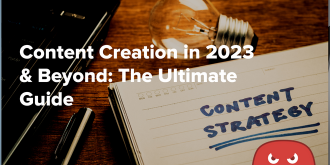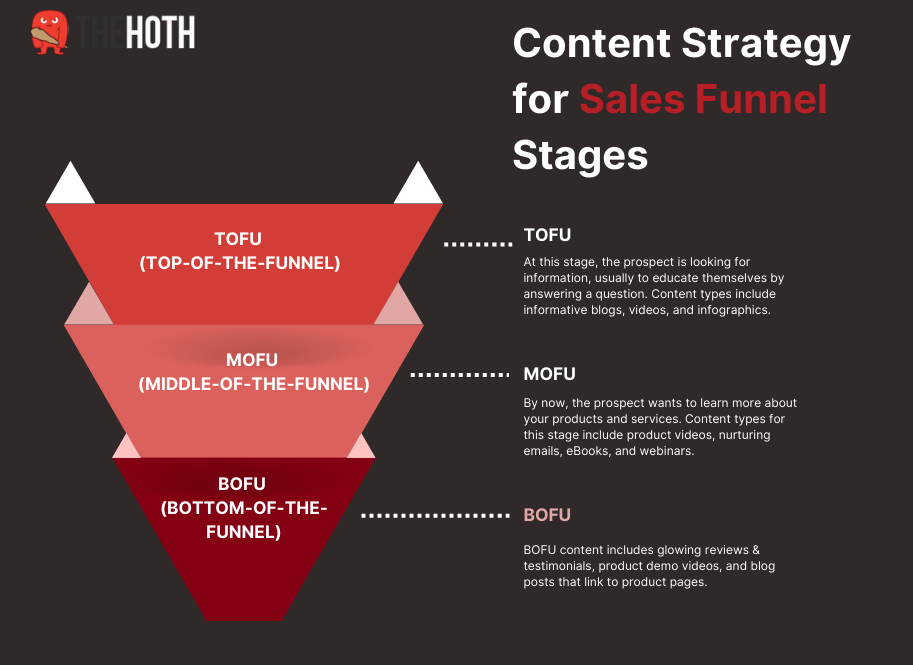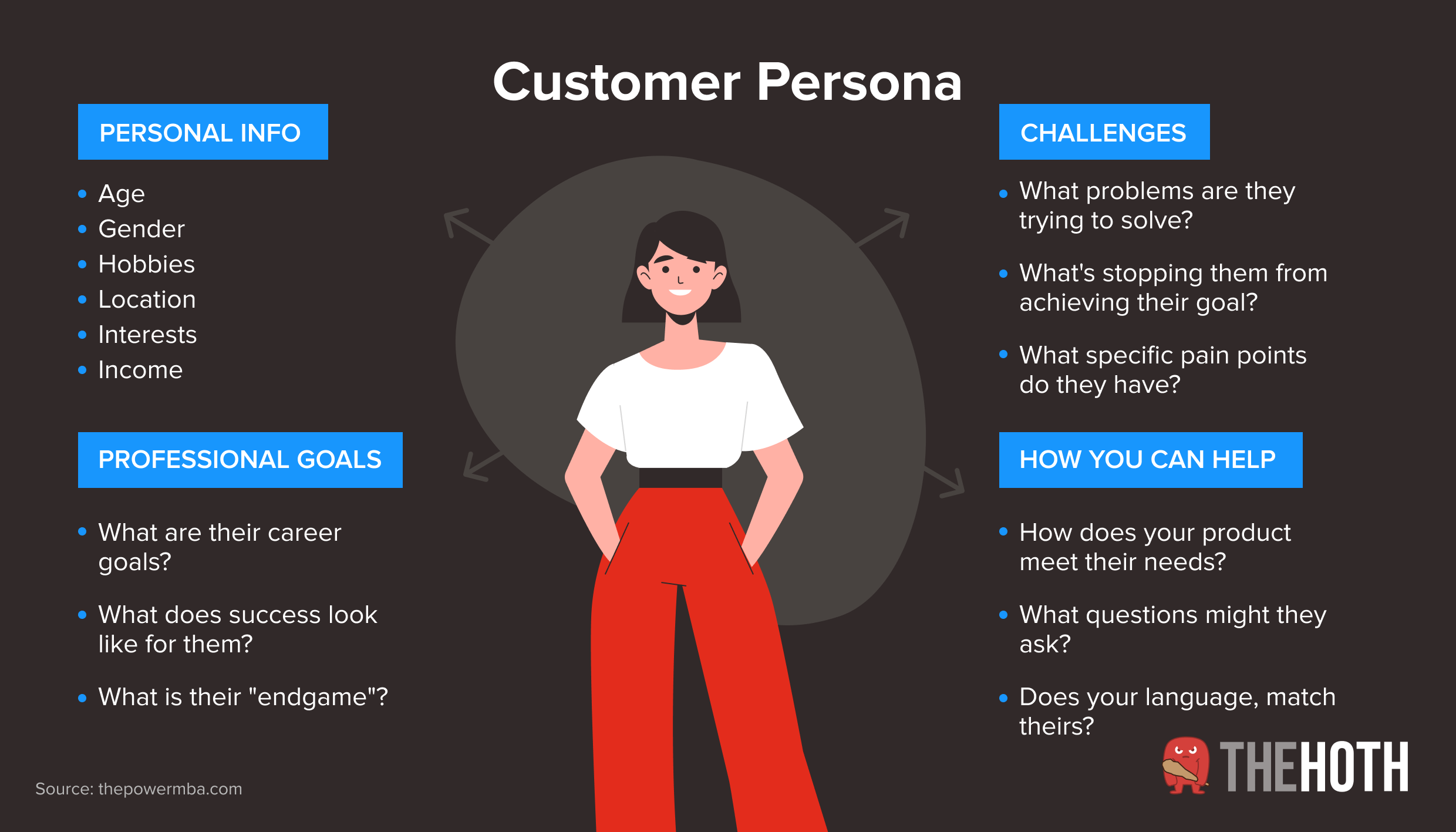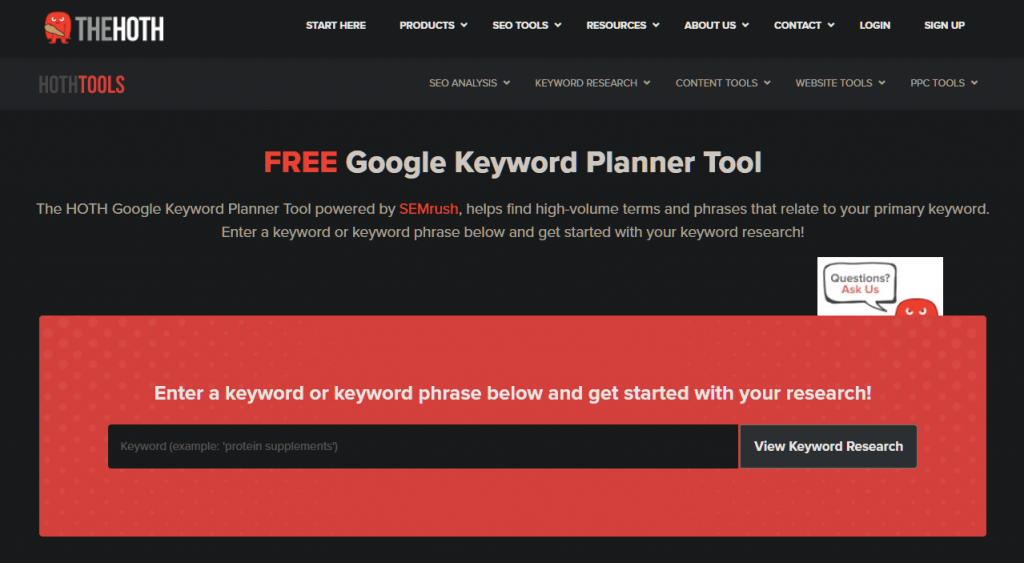Quick Links
Content still reigns supreme in 2023, as it’s estimated that 85.6% of companies will invest in a digital content strategy this year.
As Insider Intelligence points out, having some sort of content marketing strategy is ‘table stakes’ for any business eager to find success and stay relevant.
That’s because publishing content is the best way to build brand awareness, connect with your target audience, and consistently generate leads and conversions.
Yet, simply creating & publishing content without any sort of goal or direction won’t cut it.
To find success with your content marketing efforts, you need to develop a detailed content strategy containing the following:
- Clearly defined business goals
- Fully fleshed-out customer personas
- SEO keyword research
- Content ideas that appeal to your target audience
- An editorial calendar
As you can see, quite a bit goes into a successful digital content strategy. Besides that, you need to uncover the different types of content that perform best with your audience.
For instance, some audiences will prefer short-form videos on TikTok (younger audiences), while others prefer in-depth blog posts (B2B clients).
You also need to create content for every stage of your sales funnel, which will ensure that you not only educate & inform your audience with your content but also convince them to buy your products & services.
Stay tuned to learn how you can develop an airtight content marketing strategy for your business in 2023.
What is a digital content strategy?
A content strategy is a marketing plan where you create digital content to achieve your business goals.
In particular, businesses use content to boost their online visibility via search engine optimization (SEO), build brand awareness with target audiences, and generate leads & conversions.
It encompasses all organic digital marketing channels, like social media, SEO, blogging, video marketing, podcasts, and more.
The types of content used in these strategies include:
- Blog posts
- Podcasts
- eBooks
- Whitepapers
- Infographics
- Social media posts
- Video content
- Webinars
Content creation is a form of inbound marketing, meaning you attract customers to you instead of pursuing them through ad placements.
An example would be attracting leads to your website by answering common questions they have through your blog posts.
The thinking is that whenever a prospect asks a search engine like Google one of these questions, they’ll come across one of your blog posts (if your SEO is on point).
Another example would be converting prospects with in-depth video content and blog posts that link to your product pages via CTAs (calls to action).
Whatever type of content you use, the idea remains the same – to grow your business and enhance your reputation by consistently creating great content that appeals to your target audience.
Why content strategies matter
Blindly creating content in the hopes of generating traffic, leads, and sales won’t yield desirable results.
Instead, you need to designate someone as your content strategist (even if it’s you) to make things work. Quite a bit goes into developing a content strategy, including analyzing your target audience to determine which content pieces to create.
That takes countless hours of keyword research & analyzing demographics, not to mention keeping up with the latest developments in your niche.
Your content strategist will create a roadmap for your strategy via a content calendar, and they’ll also assemble your content creation team.
In addition, they’ll monitor the success of your content plan by keeping track of essential KPIs like your organic traffic, conversion rates, and user experience. If your content efforts aren’t yielding the results you want after a while, it’s time to go back to the drawing board and try something new.
However, once you find success with your digital content strategy, the sky’s the limit. Consistently producing high-quality content will help you maintain your SERP rankings, and it’ll keep leads & sales coming in for many months to come.
Creating content for every stage of the sales funnel
Many new content strategists make the mistake of focusing on creating content for one stage of their sales funnel instead of seeing the big picture.
For instance, some businesses only create content for prospects at the bottom of the funnel (BOFU), which is content that aims to convert. While scoring conversions is always great, this technique fails to cater to prospects that aren’t ready to make an immediate purchase.
Others only produce informative & educational content, which attracts prospects at the top of the funnel (TOFU). These are web users that are interested in what you do but aren’t ready to commit to making a purchase.
Yet, only producing TOFU content won’t increase your revenue, as it’s not designed to convert.
That’s why you need to produce content for each stage of your sales funnel. Here’s a quick breakdown of what that looks like:
- TOFU (top-of-the-funnel). At this stage, the prospect is looking for information, usually to educate themselves by answering a question. Content types include informative blogs, videos, and infographics.
- MOFU (middle-of-the-funnel). By now, the prospect wants to learn more about your products and services. Content types for this stage include product videos, nurturing emails, eBooks, and webinars.
- BOFU (bottom-of-the-funnel). This is where the prospect is ready to make a purchase; you just have to convince them that you’re the best. BOFU content includes glowing reviews & testimonials, product demo videos, and blog posts that link to product pages.
Creating content for each stage will ensure you reach all your prospects, not just the ones looking for information or making a purchase.
Why You Need a Digital Content Strategy
Content creation is so powerful because it’s a reliable and cost-effective way to generate organic traffic, leads, and sales.
In particular, evergreen content is particularly desirable, as it will continue to make money for your business well after publishing it.
What’s evergreen content?
It’s a piece of content that doesn’t go out of date, meaning that the information it provides will stay true forever. Examples include:
- Testimonials
- Tutorials
- How-to guides
- FAQs
- Explaining the history of something
These are all topics that won’t expire, so if you’re able to generate traffic & leads with them, they’ll continue to put in work for months and years to come.
Besides evergreen content, blogs are relatively inexpensive to produce, and they can yield impressive results. In fact, 55% of brands gain new clients thanks to their blogging efforts, and marketers that prioritize blogging see a 13x higher ROI than those who do not.
As an added bonus, the revenue you generate from your digital content strategy can help fund other digital marketing tactics, such as using paid ads on social media.
How to Develop a Digital Content Strategy in 10 Steps
Consistently publishing relevant content for your audience is no easy feat, which is why you need to know what goes into a winning content strategy.
Whether you have plenty of existing content or are creating a brand new strategy from scratch, these 10 steps will guide you through the most important parts of the content creation process.
#1: Clearly define your content goals
The first step is one of the most crucial.
That’s because the goals you develop here will guide your entire content strategy, so you need to put plenty of thought into what they should be.
What do you want to achieve from your content strategy?
When answering this question, be as specific as possible; otherwise, your goal may be too vague.
Here’s an example of a poorly defined goal:
To achieve higher SERP rankings and generate more revenue.
This goal is far too scarce on essential details like a timeframe and specific targets to hit.
Here’s a better version of the same goal:
To rank in the top 5 for our target keyword and increase revenue by 2x in 14 months.
Now the goal has some specifics you can sink your teeth into when developing the rest of your strategy. You know that you want to rank within the top 5 and see a twofold increase in revenue, and you’re giving yourself 14 months to make it happen.
Not only will this better inform your overall content strategy, but it will also give you clear metrics to measure your success.
If you aren’t on your way to penetrating the top 5 SERP results after 6 months or so, it’s a clear sign you need to retool your strategy if you want to hit your goal.
Yet, if you stick with the vague goal, it won’t be as easy to tell if you’re on the right track or not.
#2: Develop a customer avatar
Next, you need to get inside the heads of your target audience to better understand how they behave as consumers.
How do you do that?
The best way is to create a detailed customer avatar (aka buyer persona), which is a consumer profile that represents one of your typical audience members.
Your customer avatar needs the following:
- A Name
- Age
- Occupation
- Interests
- Hobbies
- Consumer habits
- Pain points
Feel free to get as detailed as you want with your avatar, as you can even include a picture if that helps you. The purpose of a customer avatar is to understand what your potential customers want and how they think.
That will make it far easier to develop relevant content ideas that will appeal to them, which will help you achieve your content goals.
Creating a customer avatar requires lots of research. In particular, you need to read & analyze customer interviews, surveys, and product reviews.
Social media analytics tools come in handy when developing customer avatars, especially Facebook Audience Insights. Google Analytics is another invaluable tool, as it will let you know which social channels your audience likes to use the most.
That’s powerful information to know, as it will dictate where you release most of your content. For instance, if you discover that most of your prospects use LinkedIn more than any other social media platform, you’ll definitely want to upload your blogs & videos to your LinkedIn profile.
#3: Assemble a content creation team
How do you plan on creating all the content you need for your strategy?
This is a question you need to ask yourself before you go any further with your content plans.
You’ll need to decide how much content you’ll create by yourself (if any), how much your in-house team will handle (if you have one), and how much you’ll outsource to freelancers/automate with AI.
If you plan on tackling some of the content yourself, ensure that you know what you’re getting into first. If you want to handle some of the blog writing, for example, write a few ‘test’ blogs to see if it’s something you can fit into your schedule.
If not, you’ll need to either use in-house writers or hire freelance writers. Some AI programs are also capable of automating short-form content that doesn’t require original insight, which can save you some money.
Yet, to stand the best chance at building a following, you’ll definitely need to incorporate the human touch.
Services like iWriter and UpWork are excellent resources for finding freelance content creators, including writers, editors, graphic designers, web developers, and more.
You may also need to hire videographers and video editors for your video content, or you can choose to film it in-house. It’s crucial to work out the logistics of your videos before shooting to determine if you need elaborate production or if winging it with an iPhone and Windows Movie Maker can work.
Publishing content can also be a challenge if you don’t have experience. If you don’t know how to upload content to a CMS (content management system) like WordPress, you’ll need to hire a freelancer to handle that for you as well.
#4: Gather the necessary tools and resources
Speaking of CMS programs, you’ll need to decide on one if you haven’t already. Popular options include WordPress, Squarespace, and Wix.
A CMS serves as a central location to create, publish, manage, and track your content, which is incredibly convenient for content strategists.
There are also lots of other tools that you can use to bolster your digital content strategy, including project management systems like Asana & Trello.
These programs allow you to assign, track, and monitor tasks in one spot, which is a great way to manage your content creation team & streamline your workflows.
You can even communicate with your team through built-in messengers and integrations with apps like Slack. A project management tool will enable you to view your content calendar and open tasks in the same place, which will make organizing your content strategy far easier than trying to juggle multiple apps.
Creating content isn’t free, so you’ll also need to determine your budget. In doing so, consider not only the cost it will take to produce the content but also how much you’ll need to pay your freelancers/in-house staff.
For instance, do you want to focus resources on content production (i.e., high-resolution videos, dazzling graphics, etc.), or would you rather allocate funds toward securing top-notch freelance writers & designers?
Either way, budgeting will involve some level of give and take, so you need to determine your priorities early on. Ultimately, the needs of your target audience should take precedence over everything else, so base your budgeting decisions on your research & customer avatars.
#5: Conduct SEO keyword research
Once you’ve got your team and tools in place, it’s time to start conducting keyword research – not only for SEO purposes but also to guide your content strategy.
Keywords or search queries are what your target audience types into search engines to find information about products & services related to what you do.
By uncovering and targeting these keywords, you’ll not only appeal to search engines, but you’ll also better understand the types of content your target audience is looking for the most.
It always helps to consider an example, so let’s say you sell gardening tools online.
After doing a little digging using our free keyword planner tool, you land upon the long-tail keyword ‘how to prune roses.’
It has a high search volume and an upward trend, which means ranking for it will benefit your SEO profile. In addition, the keyword provides a hint at which type of content you should produce for it.
Since it’s clear that lots of people want to learn how to prune roses, developing a how-to guide or tutorial in either video or blog format is the way to go.
Ideally, your piece of content will begin to attract organic visitors eager to learn how to prune their garden roses properly. With a well-placed CTA or lead magnet, this helpful how-to guide will start generating sales & leads for your business.
That’s a brief & idealistic breakdown of keyword research, but the principle is there. You need to identify trending keywords in your niche to create content for, and our free tool can help with that.
#6: Brainstorm content ideas for your keywords
Once you have at least two to three keywords to target per piece of content, you can start brainstorming ideas for them.
Just like the step above, the keyword itself usually holds clues as to which type of content you should produce for it.
Ultimately, it’s up to you to decide what to produce, but you should base your decisions on your research. Let’s consider another keyword related to gardening tools using our keyword planner.
If you want to promote your gardening hoes, you’ll quickly notice that ‘garden hoe’ is on a downward trend. However, ‘garden hoeing tools’ is trending up in a big way, so you decide to target that instead.
What type of content should you create for this keyword?
Well, the first thing that comes to mind is a blog listicle entitled ‘The Top 10 Garden Hoeing Tools You Must Try.’
In it, you can list & review the top garden hoeing tools from around the web, all while promoting your garden hoes via call-out boxes and a CTA at the end.
Also, don’t forget the preferences of your target audience when determining which formats to use. If you’re targeting a younger demographic, you should focus heavily on short-form videos that you can upload to platforms like TikTok.
#7: Create a content roadmap
By now, you should have a list of relevant keywords and content ideas to go along with them.
Yet, you still need to map out your path to victory via a content roadmap.
This roadmap will serve not only as your content calendar but also as a map toward achieving your goals.
You should aim for a mix of evergreen & timely topics to achieve the best of both worlds. While your evergreen pieces continue to put in work for you, your timely pieces will ensure you capitalize on massive spikes of traffic that occur from reporting on buzzing topics.
If you focus entirely on producing evergreen content, you’ll miss out on these traffic spikes – which can mean missing out on potential revenue.
When forming your release schedule, ensure that you’re blogging at least 2 – 4 times a week to see the best results.
You should also factor in niche holidays that matter to your target audience, as publishing content around these events can help you generate more traffic and build a loyal following.
#8: Audit your existing content
This step won’t apply if you don’t have existing content on your website. However, it will apply once you’ve accrued a library of content, and regular content audits are necessary for a healthy SEO profile.
Running a content audit means analyzing your data to determine your highest-performing and lowest-performing pieces of content.
It’s crucial to do this regularly to inform your content strategy going forward.
That’s because the last thing you want to do is continue to spend resources on creating content that doesn’t yield results.
#9: Create & publish content
Now that all the prep work is done (yeah, it’s a lot), you can finally start creating and publishing your own content.
Along the way, keep an eye on your project management tools to ensure everything is going smoothly. Make sure that your content creation team knows when each piece is due to keep things running smoothly.
#10: Analyze data & monitor progress
While content marketing & SEO takes time to start gaining traction, you should keep an eye on essential metrics and key performance indicators as soon as possible.
That means checking Google Analytics and Google Search Console to monitor your SERP rankings, organic traffic, and conversion rates. If you don’t see the results you want within a few months, it’s a sign that you need to go back to the drawing board and try something else.
Putting Together a Digital Content Strategy That Works for You
That’s what it takes to develop a successful digital content strategy for any business.
As long as you base all your decisions on informed research, develop a content roadmap, and monitor your progress, you shouldn’t have trouble getting a winning content strategy off the ground.
Need expert help with your content strategy?
Then look no further than our managed content services at The HOTH. Our team of digital marketing & SEO gurus will provide a winning digital content strategy for you so you can focus on running your business.















Good article Rachel. I’ll come back to this and use suggestions from you to build into our best practices. Thanks for sharing.
Hey Curt,
Awesome. If you need any help, you know where to find us.